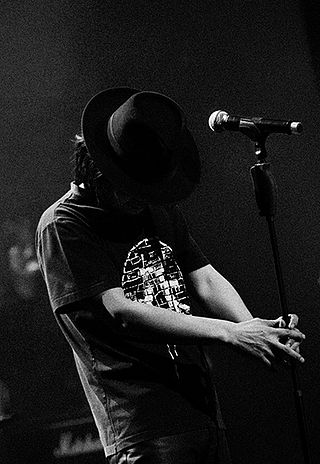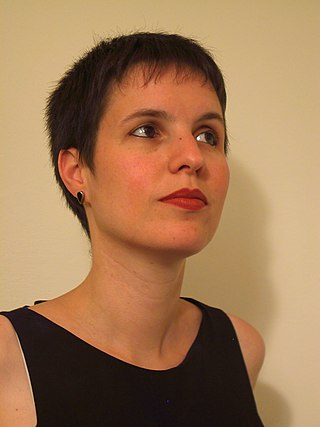Performance art in China has grown since the 1970s as a response to the very traditional nature of Chinese state-run art schools. It has become more popular in spite of the fact that it is currently outlawed. In 1999, the importance of contemporary Chinese art was recognized by the inclusion of 19 contemporary Chinese artists in the Venice Biennale. In recent years, many of these artists have made performances specifically for photography or film.

Sui Jianguo, professor and ex-chairman of the Department of Sculpture in Central Academy of Fine Arts in Beijing, is a contemporary Chinese artist.
Photography in China dates back to the mid-19th century with the arrival of European photographers in Macao. In the 1850s, western photographers set up studios in the coastal port cities, but soon their Chinese assistants and local competition spread to all regions.

The Beijing city fortifications were a series of walls with towers and gates constructed in the city of Beijing, China in the early 1400s until they were partially demolished in 1965 for the construction of the 2nd Ring Road and Line 2 of the Beijing Subway. The original walls were preserved in the southeastern part of the city, just south of the Beijing railway station. The entire perimeter of the Inner and Outer city walls stretched for approximately 60 kilometres (37 mi).
Ming Fay is a Shanghai-born and New York City-based sculptor and professor. His work focuses on the concept of the garden as a symbol of utopia and the relationship between man and nature. Drawing upon an extensive knowledge of plants both Eastern and Western, real and mythical, Fay creates his own calligraphic floating forest of reeds, branches and surreal species. He is most well known for his sculpture and large scale installations and he currently teaches sculpture at William Paterson University in Wayne, New Jersey.

The Hall of Mental Cultivation is a building in the inner courtyard of the Forbidden City in Beijing, China. The hall is a wooden structure with dome coffered ceilings, and was first built during the Ming dynasty in 1537, and was reconstructed during the Qing dynasty. During the early Qing dynasty under the reign of the Kangxi Emperor the hall was mostly used as a workshop, wherein artisan objects like clocks were designed and manufactured. From the reign of the Yongzheng Emperor during the 18th century, the hall was the residence for the emperor. Under the reign of the Qianlong Emperor until the fall of the Qing dynasty, the hall became the centre of governance and political administration. In the Western Warmth Chamber, the emperor would hold private meetings, and discuss state affairs with his mandarins. After the death of Emperor Xianfeng, from inside the Eastern Warmth Chamber, empress dowagers Ci'an and Cixi would hold audiences with ministers and rule from behind a silk screen curtain during their regencies for emperors Tongzhi and Guangxu, who both succeeded to the throne as children in the second half of the 19th century.
Island6 Arts Center is an artist-run space and creative platform established in Shanghai, China. It was founded in 2006 by French curator/artist Thomas Charvériat.

Zuoxiao Zuzhou, is a Chinese musician and artist.
Lionel Bawden is an Australian visual artist. He lives and works in Sydney, Australia.
Jean-Marc Decrop is a specialist of Chinese contemporary art. He is one among the art collectors who have contributed to the discovery, the recognition and the influence of Chinese contemporary art abroad.

UCCA Center for Contemporary Art or UCCA is a leading Chinese independent institution of contemporary art. Founded in 2007 and located at the heart of the 798 Art District in Beijing, China, it welcomes more than one million visitors a year. Originally known as the Ullens Center for Contemporary Art, UCCA underwent a major restructuring in 2017 and now operates as the UCCA Group, comprising two distinct entities: UCCA Foundation, a registered non-profit that organizes exhibitions and research, stages public programs, and undertakes community outreach; and UCCA Enterprises, a family of art-driven retail and educational ventures. In 2018, UCCA opened an additional museum, UCCA Dune, in Beidaihe, a seaside resort town close to Beijing. In 2021, a third site in Shanghai was opened, UCCA Edge. The museum had 385,295 visitors in 2020, and ranked 55th in the List of most-visited art museums in the world.

Shen Jingdong is a contemporary Chinese artist known for his paintings and sculptures of Chinese iconography. He currently lives in Beijing.

The Beijing Ming City Wall Ruins Park is a park in Beijing with the longest and best preserved section of the city's Ming Dynasty city wall. The park is located 3 km (1.9 mi) from the city center and extends east from Chongwenmen to Dongbianmen and then north to near to Beijing Railway Station East Street. The park features a 1.5 km (0.93 mi) section of the Ming city wall and the Southeast Corner Tower, which are over 550 years old and surrounded by green park space to the south and east. The park covers an area of 15.5 ha, including 3.3 ha of fortifications and 12.2 ha of green space. The corner tower and the ramparts atop the wall can be accessed for an admission fee.

Nirith Nelson is a contemporary art and design curator and art educator. She is the art director of the Residency Program of the Jerusalem Center for the Visual Arts.

DE SARTHE is a contemporary art gallery with spaces in Hong Kong and Scottsdale, Arizona. The gallery's contemporary art program exhibits and promotes emerging artists from Asia, and its advisory focuses on 19th and 20th century master paintings and sculptures.

Liangang Sun, is a Chinese contemporary artist. He is the initiator of contemporary Ideographism, director of Chinese Artists Association, and Curator of Caochangdi Art District.
Chen Ke is a Chinese artist. She currently lives and works in Beijing. Having participated in numerous international and domestic exhibitions, Chen Ke has worked in a variety of media, including painting, sculpture and fashion design. Chen Ke is recognized as the most representative artist of the New Generation of Cartoon of China.

Peter Wayne Lewis is a Jamaican-American contemporary artist known for his large-scale abstract paintings, many of which are combined to form singular floor-to-ceiling works of art. Lewis has contributed paintings to exhibitions internationally, and has presented solo shows in Europe, North America, Asia and most frequently the People's Republic of China.










